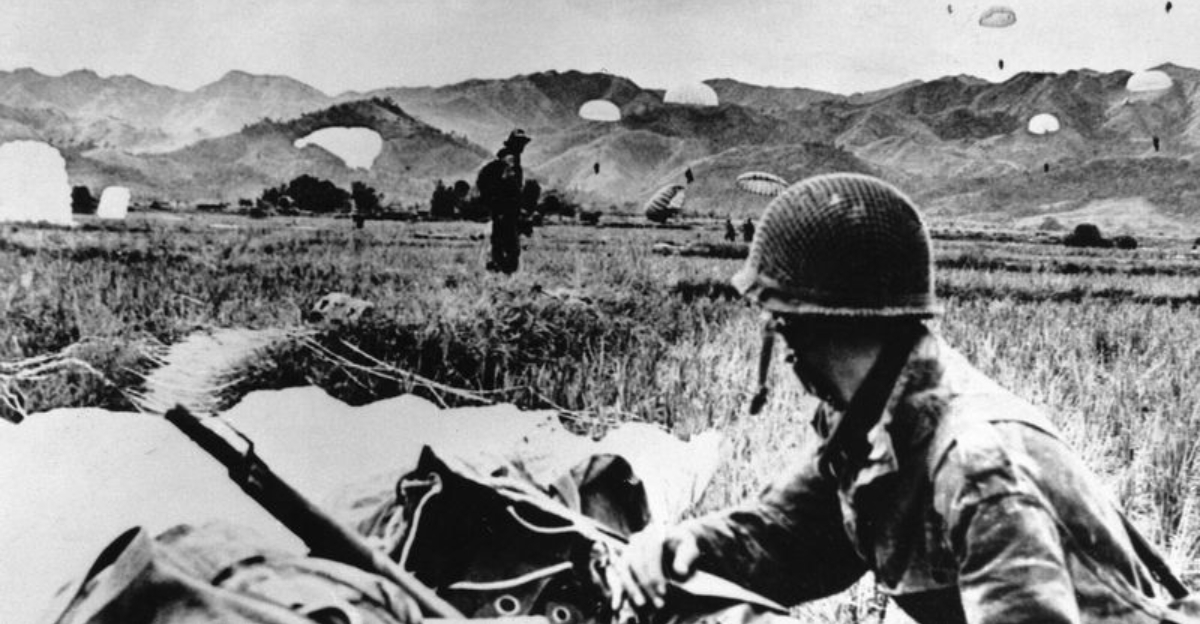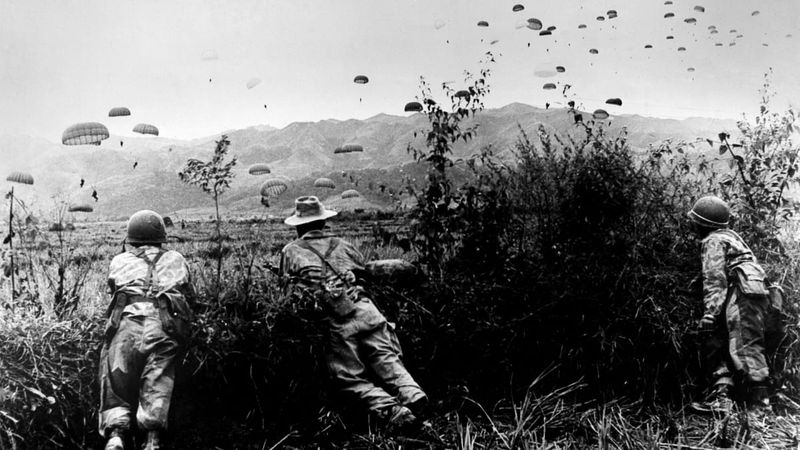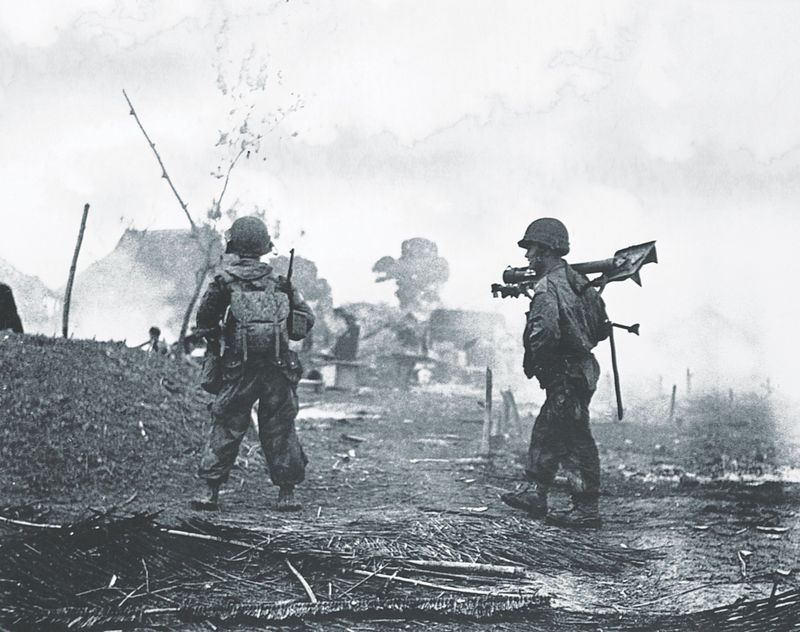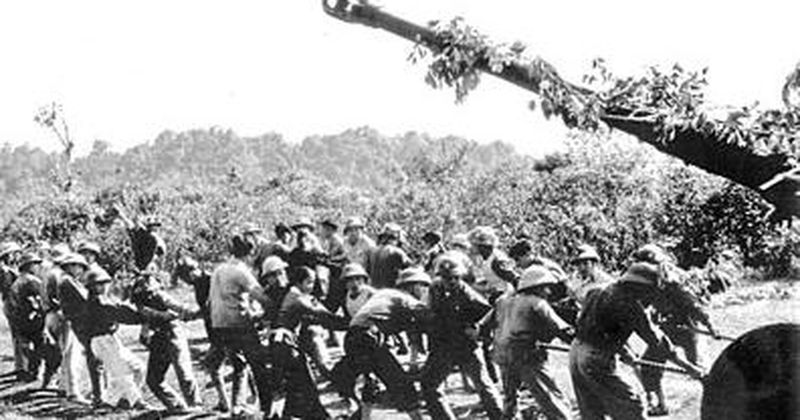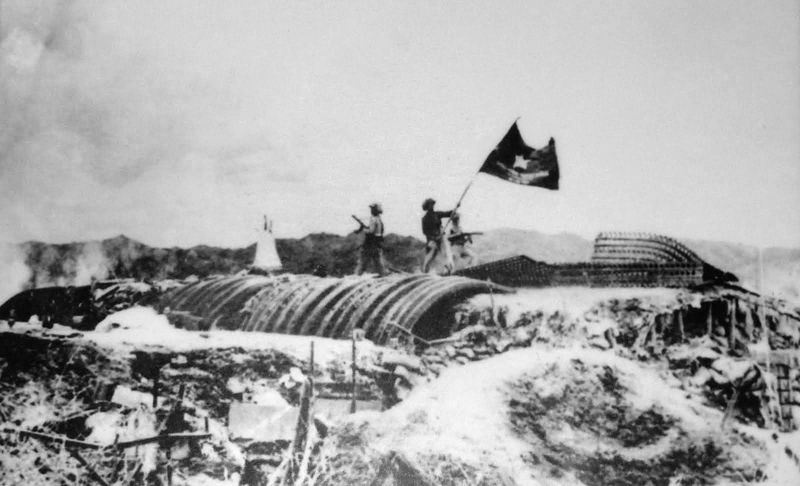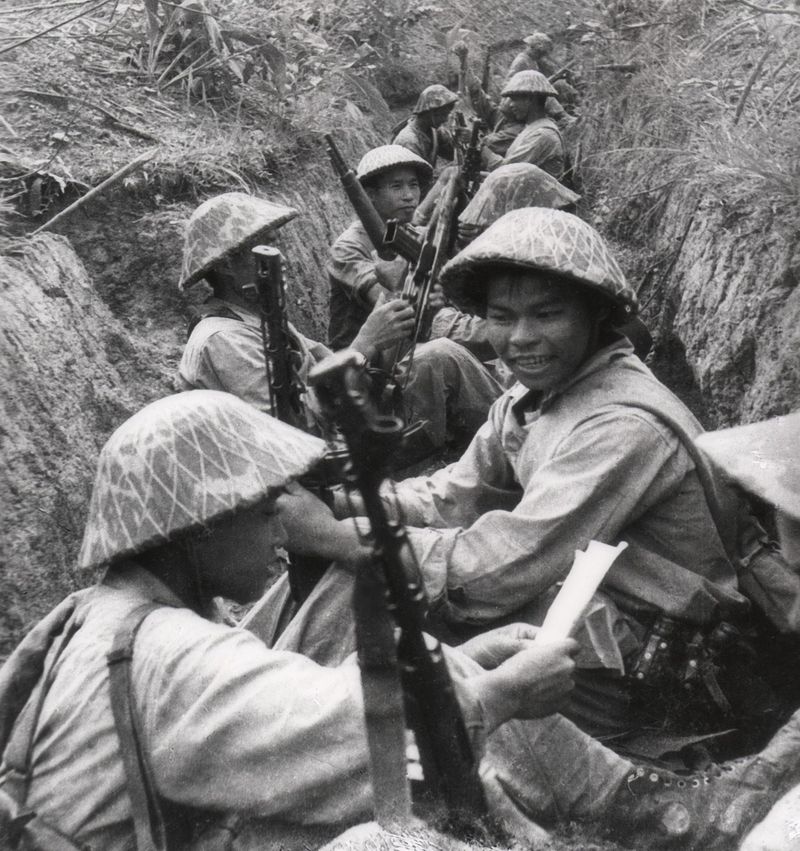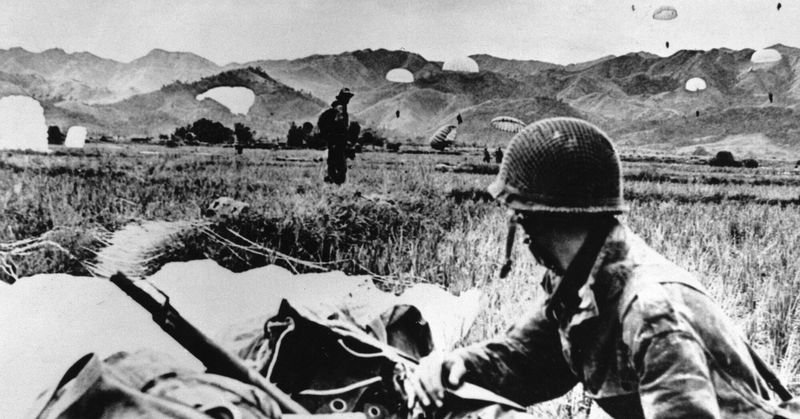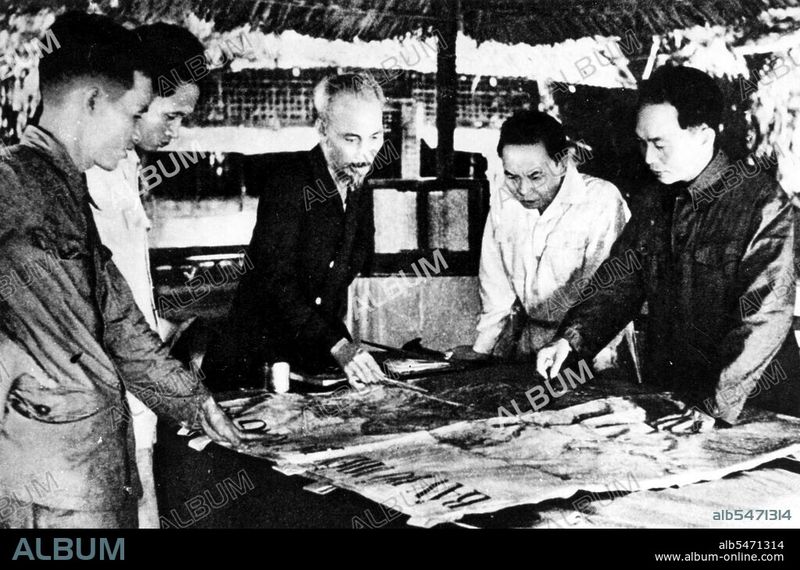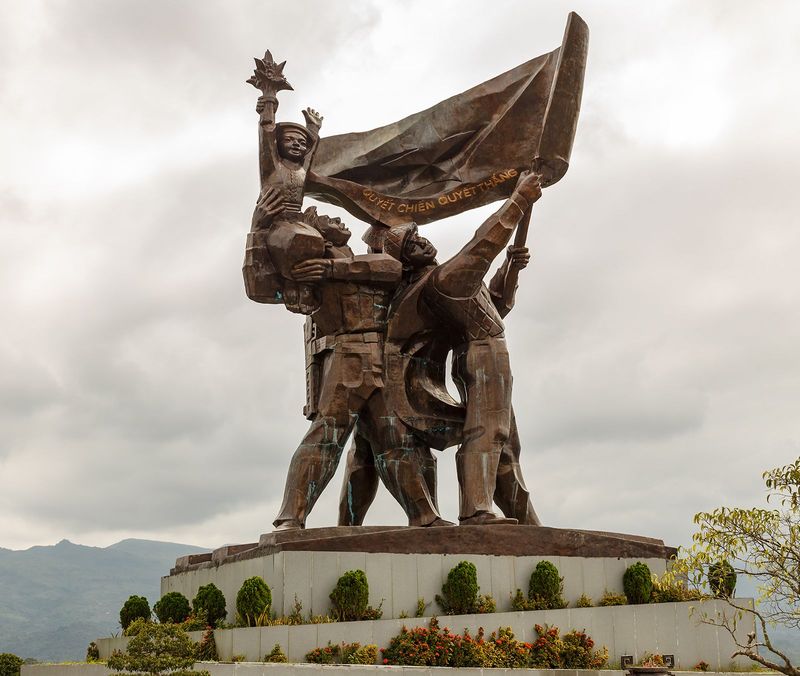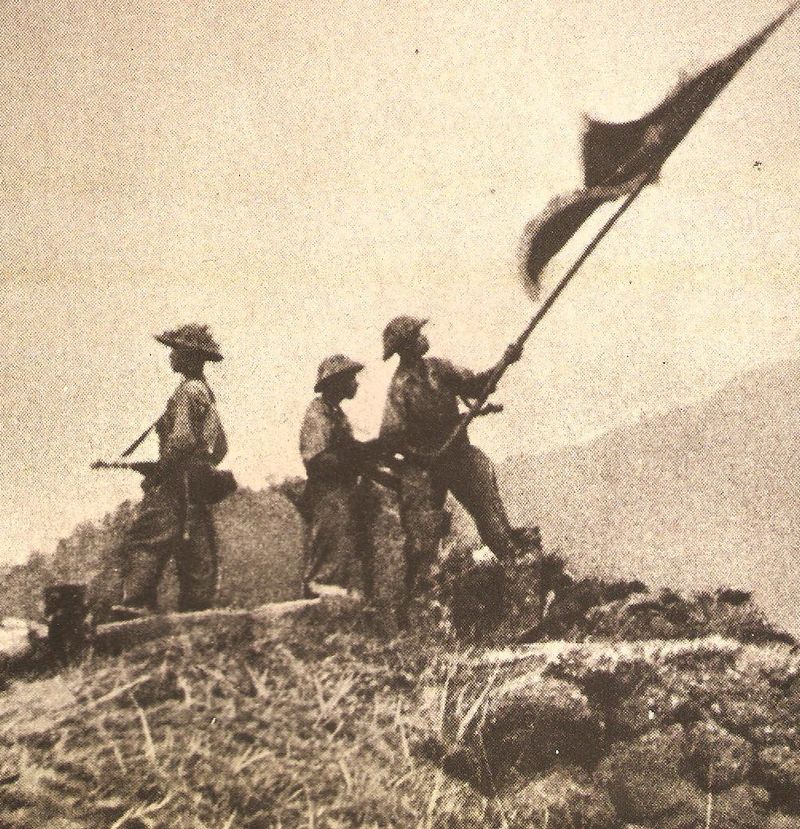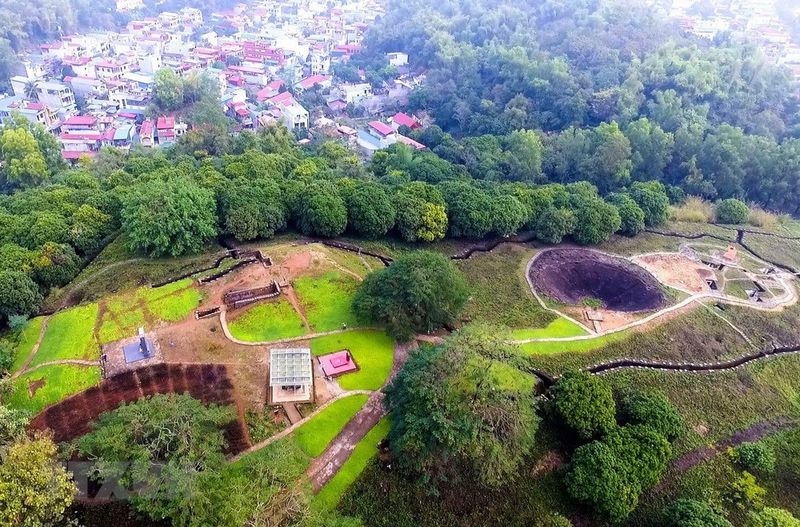In 1954, a single devastating battle changed the course of history in Southeast Asia. At Dien Bien Phu, Vietnamese independence fighters delivered a shocking defeat to French colonial forces that reverberated around the world.
This wasn’t just another military engagement – it was the death knell for European colonialism in Asia and a powerful symbol for independence movements everywhere.
1. It All Started with a Trap — But France Set It for Itself
Overconfidence became the French military’s fatal flaw in late 1953. General Henri Navarre, convinced of French superiority, established a fortress in the remote valley of Dien Bien Phu to lure Viet Minh forces into open battle.
The strategy backfired spectacularly. Instead of walking into a trap, Vietnamese General Võ Nguyên Giáp meticulously surrounded the French position with over 50,000 troops, turning the hunters into the hunted.
French commanders fatally assumed their air superiority and artillery would guarantee victory. This miscalculation stemmed from colonial arrogance—they simply couldn’t imagine their “inferior” opponents outmaneuvering European military expertise.
2. Dien Bien Phu Was Deep in Viet Minh Territory — and Isolated
Nestled among jungle-covered mountains over 200 miles from Hanoi, the French garrison might as well have been on another planet. Supply lines stretched dangerously thin, with aircraft providing the only lifeline to this remote outpost.
The valley’s geography proved treacherous. Surrounded by steep hills rising 1,600 feet above the basin, French forces essentially positioned themselves at the bottom of a bowl—with Vietnamese forces controlling the high ground.
Weather complicated matters further. Monsoon rains turned landing strips to mud, while fog frequently prevented supply drops altogether. The French had inadvertently chosen terrain that maximized every disadvantage they could possibly face.
3. Viet Minh Troops Dragged Artillery Up Mountains — By Hand
What seemed impossible became Vietnamese ingenuity’s greatest triumph. General Giáp mobilized thousands of porters—many of them women—to dismantle heavy artillery pieces and carry them piece by piece up steep mountain trails.
Each 105mm howitzer, weighing several tons, was broken into 180 parts and reassembled on mountaintops overlooking French positions. Bicycle frames were repurposed as transport frames, while bamboo contraptions helped move heavier components.
French intelligence dismissed reports of this herculean effort as fantasy. “They simply cannot get artillery up there,” one officer reportedly claimed. When the first shells rained down on March 13, 1954, the psychological impact was devastating—the impossible had happened.
4. France’s Airstrip Was Destroyed Early — Cutting Off Resupply
The beginning of the end came with methodical precision. On March 14, 1954, Viet Minh artillery targeted the main airstrip, rendering it unusable within hours. The backup landing zone fell next, leaving only parachute drops as an option.
Desperation grew with each passing day. Medical supplies dwindled while wounded soldiers accumulated in makeshift underground hospitals. Food rations were cut repeatedly.
Parachute drops became increasingly futile. Vietnamese anti-aircraft fire intensified, while shifting winds carried precious supplies directly into enemy hands. By April, less than half of dropped supplies reached French forces. The garrison slowly starved while surrounded by mountains of their own supplies in enemy territory.
5. The Viet Minh Dug Over 200 Miles of Trenches
Under cover of darkness, an extraordinary engineering feat unfolded. Vietnamese forces carved an elaborate network of zigzagging trenches steadily advancing toward French positions—sometimes gaining just yards per night.
The trenches represented more than military strategy. Workers dug with whatever tools were available—often just their hands and crude implements. Some tunnels reached 70 feet deep, providing protection from French artillery while allowing Vietnamese forces to emerge just yards from enemy bunkers.
French soldiers watched helplessly as the web of earthworks tightened around them. “It was like watching your own funeral procession approach,” one survivor later recalled. This patient, methodical approach neutralized French technological advantages and brought Vietnamese fighters literally to the doorstep of French strongpoints.
6. The Casualties Were Catastrophic
Human suffering reached staggering proportions during the 56-day battle. Of approximately 15,000 French and allied troops, nearly 2,200 died in combat, while thousands more perished during brutal prisoner marches or in captivity.
Vietnamese losses were even higher—estimated between 8,000-10,000 killed and 15,000 wounded. Yet their sacrifice carried profound meaning as a price for independence. French prisoners endured a 500-mile forced march to prison camps, with many dying along the way.
Medical facilities on both sides collapsed under impossible demands. The French field hospital, designed for 42 patients, eventually held over 1,200 wounded men. Surgeons performed amputations without anesthesia, while dysentery and tropical diseases ravaged those who escaped bullets and shrapnel.
7. France’s Colonial Empire in Asia Collapsed Overnight
The white flag raised over Dien Bien Phu on May 7, 1954, signaled far more than military defeat. It marked the beginning of the end for Western colonialism across Asia and Africa.
Political earthquake tremors reached Paris immediately. The French government collapsed within weeks, while peace negotiations in Geneva accelerated dramatically. By July, France agreed to withdraw completely from all of Indochina—ending nearly a century of colonial rule.
Vietnam was temporarily divided at the 17th parallel, with elections planned to reunify the country. Though these elections never materialized, the psychological victory was complete. The myth of Western military invincibility had been shattered forever, inspiring independence movements from Algeria to Zimbabwe.
8. Dien Bien Phu Inspired Anti-Colonial Movements Around the World
News of the Vietnamese victory spread like wildfire through colonial territories worldwide. In Algeria, independence fighters launched their revolution just months later, directly citing Dien Bien Phu as inspiration.
Freedom movements from Kenya to Indonesia studied General Giáp’s tactics. His emphasis on political education alongside military training became a blueprint for revolutionary movements. The psychological impact proved even more significant than the military lessons.
French writer Bernard Fall captured this transformation: “The white man had been defeated in Asia, and he could be defeated elsewhere.” Within a single generation after Dien Bien Phu, nearly every European colonial possession would gain independence—the dominoes of empire toppled faster than anyone predicted.
9. The U.S. Was Watching — And Would Soon Take France’s Place
American officials observed France’s catastrophe with growing alarm. Secretary of State John Foster Dulles had considered using atomic weapons to save the French garrison—a proposal President Eisenhower ultimately rejected.
The battle’s outcome accelerated American involvement. By 1955, U.S. military advisors replaced departing French forces in South Vietnam, beginning a slow escalation that would eventually bring over 500,000 American troops to Vietnam.
Tragically, American strategists studied the wrong lessons from Dien Bien Phu. They focused on avoiding conventional defeats while missing the crucial political dimensions of revolutionary warfare. This fundamental misunderstanding would haunt American efforts for the next twenty years and lead to their own devastating defeat.
10. Today, Dien Bien Phu Is a National Symbol in Vietnam
The battlefield has transformed into sacred ground. Vietnamese families visit the meticulously preserved trenches, bunkers, and memorials to connect with their national story of resistance against overwhelming odds.
French veterans have also returned—sometimes meeting former enemies in emotional reconciliation ceremonies. Time has transformed bitter enemies into respectful former adversaries. The museum displays artifacts from both sides, including personal items from soldiers who never returned home.
For Vietnamese people, Dien Bien Phu represents something profound: proof that determination can overcome seemingly insurmountable power imbalances. The annual May 7th victory celebration remains one of Vietnam’s most important holidays—a reminder that nations, not just armies, determine the outcome of wars.
